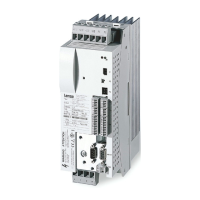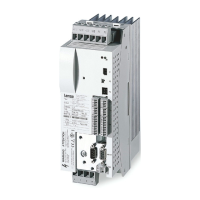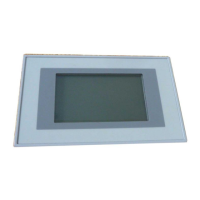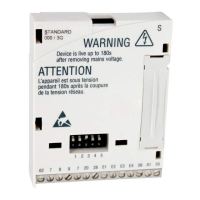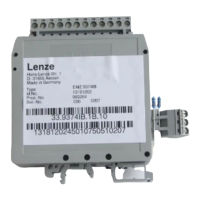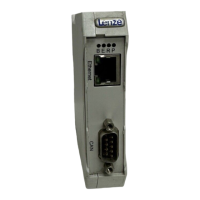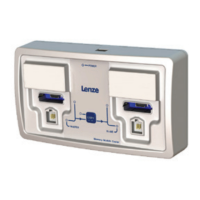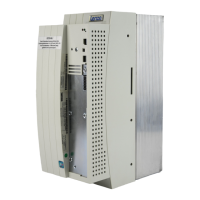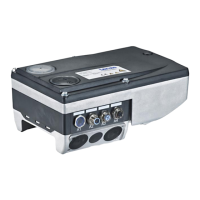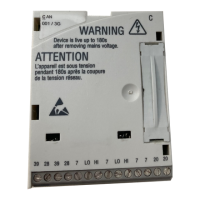Safety instructions
Thermal motor monitoring
Self−ventilated motors
2
24
EDBCSXM064 EN 11.0
2.2.2 Self−ventilated motors
Due to the construction, self−ventilated standard motors are exposed to an increased heat
generation in the lower speed range compared to forced ventilated motors.
Warnings!
For complying with the UL 508C standard, you have to set the
speed−dependent evaluation of the permissible torque via code C0129/x.
Parameter setting
The following codes can be set for I
2
x t monitoring:
Code Meaning Value range Lenze setting
C0066 Display of the I
2
x t load of the motor 0 ... 250 % −
C0120 Threshold: Triggering of error "OC6" 0 ... 120 % 0 %
C0127 Threshold: Triggering of error "OC8" 0 ... 120 % 0 %
C0128 Thermal motor time constant 0.1 ... 50.0 min 5.0 min
C0606 Response to error "OC8" TRIP, warning, off Warning
C0129/1 S1 torque characteristic I
1
/I
rated
10 ... 200 % 100 %
C0129/2 S1 torque characteristics n
2
/n
rated
10 ... 200 % 40 %
Effect of code C0129/x
0
0.9
0 0.1
C0129/2
0.2 0.3 0.4
0.6
0.7
0.8
1.0
1.1
1
0
0.132
2
I / I
N
n / n
N
C0129/1
3
9300STD350
Fig. 2−2 Working point in the range of characteristic lowering
The lowered speed / torque characteristic (Fig. 2−2) reduces the permissible thermal load
of self−ventilated standard motors. The characteristic is a line the definition of which
requires two points:
ƒ Point : Definition with C0129/1
This value also enables an increase of the maximally permissible load.
ƒ Point : Definition with C0129/2
With increasing speeds, the maximally permissible load remains unchanged
(I
Mot
= I
rated
).
In Fig. 2−2, the motor speed and the corresponding permissible motor torque () can be
read for each working point (on the characteristic () ... ). can also be calculated
using the values in C0129/1and C0129/2 (evaluation coefficient "y", 25)

